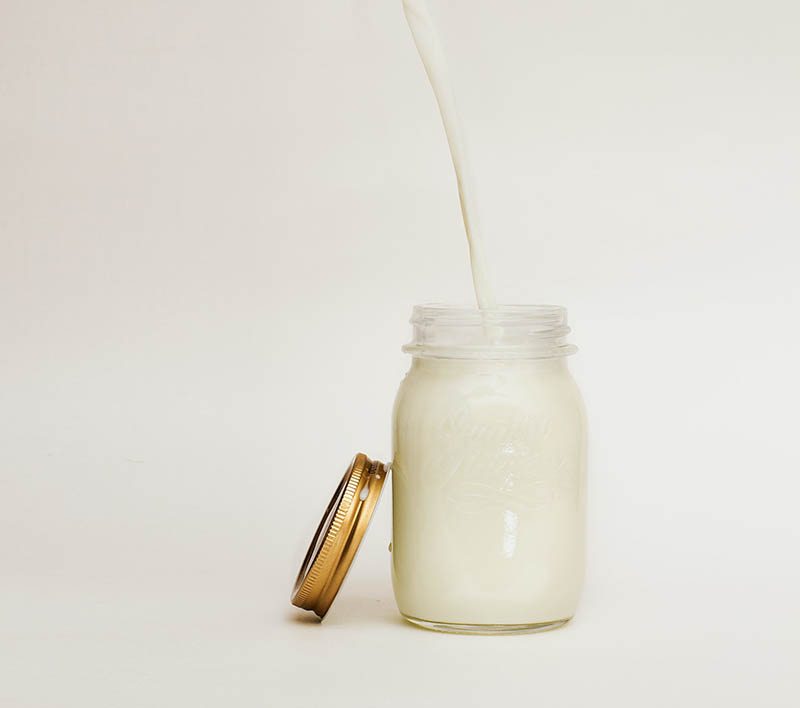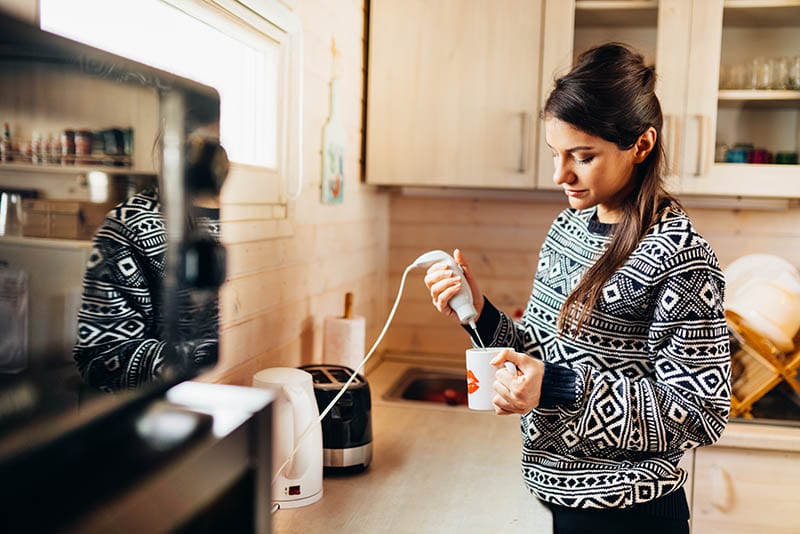
Milk foam is one of the latte’s most attractive features. The creaminess of the frothed milk creates a cozy feeling inside us as we sip, even while the caffeine hypes us for the day’s events ahead. Every barista, whether professional or at home, is familiar with the disappointment we feel when we think we have prepared a beautiful frothy latte, just to watch the milk foam disappear a short time later. High-quality, long-lasting milk foam is one of the main goals of crafting a really good latte, so preheat your espresso machine and we’ll start steaming after we’ve shared some tips on how to make your foam really stand out.
Top 3 Common Reasons Why Milk Foam Collapses
Milk froths as the forced hot water and air from the steam wand separates its particles. This process creates that creaminess that we crave. Some reasons your milk might not froth, or soon falls apart after bubbling, might be due to these common factors.
1. The Milk Isn’t at the Proper Temperature

You can froth cold milk. Immersion blenders and whisks allow you to froth the milk without heating it, making these tools a great choice for cold drinks. However, milk can become too hot to properly froth. If milk nears the boiling point it will scald. The particles separate too much, and the milk will taste a little scorched and sour. Scalded milk doesn’t froth. Ideally, you want to aim for around 140ºF for a perfect milk temperature for a hot latte. Never exceed 165ºF to avoid scalding the milk.
2. The Steam Wand Isn’t in the Right Place

You should submerge the tip of the steaming wand about 1 inch under the surface of the milk. If you plunge any deeper, you will not circulate enough air to create bubbles. However, if you keep the steam wand just on the surface, not only will your milk remain chilled, but you’ll also only make large bubbles (and splash it all over yourself, too).
3. Some Plant-Based Milks Don’t Froth

Rice, macadamia, and cashew milk are not good choices for frothed drinks. Skim is the least desirable of the dairy options, but you can make it work by bumping your cup on the counter to pop the larger bubbles and create a smoother texture.
How to Form the Perfect Foam
Now that you know the common reasons why milk foam collapses, let’s get ready to create the perfect latte. Grab a cup for steaming and your milk of choice, and head to the kitchen.
1. Pour the Milk of Your Choice Into Your Pitcher
Frothed milk is more voluminous than plain milk straight from the refrigerator, so be sure to leave some room for the milk and any added espresso shots if you plan on drinking out of your cup when you’re done. Due to their composition, whole milk or oat milk works best, but you can also use 2% or almond. Soy creates a denser froth, so it would make for an extra creamy indulgence, but don’t plan on it cooperating for latte art. Since it is heavier, it will just dump out instead of pouring gracefully.
2. If Using a Steam Wand, Place the Steam Tip About 1 inch Under the Milk’s Surface & Steam

If you’re using a steam wand alternative, whisk, mix, or froth until you achieve your desired texture. For hot lattes, remember 140ºF is an ideal temperature for your milk. Never go above 165ºF or you’ll run the risk of scalding your milk.
3. If You Have a Lot of Large Bubbles, Gently Bump the Cup Against the Counter

Some milk choices, such as 2%, may create more bubbles than others. Most people find this a little obnoxious since microfoam is the preferred look. Simply bump your cup against the counter to bust the bubbles. You can also use a coffee stirrer or gently swirl the cup in your hand.
Steam Wand Alternatives That Can Froth Milk
A fancy espresso machine with a steam wand is the most effective choice for achieving the temperature and froth you want. However, since they can be pricey, most at-home coffee connoisseurs resort to one of these options when recreating their favorite cafe drinks in their own kitchen.
1. Milk Frother

Some espresso machines for home use feature a milk frother on the side. Other times, you can buy them separately. These tiny appliances work by whisking the poured milk. Some will also heat your milk, but others simply make the texture and bubbles.
2. Handheld Frothing Wand

This small tool doesn’t heat, but since it fits into your hand, you have more control over the froth level than you would with a milk frother. Handheld wands tend to be really cheap; you can probably find one around $20.
3. French Press
We haven’t tried this method yet, but some people claim to repeatedly use the plunger on their French press to create the milk froth. We’re willing to give it a try whenever we don’t have a brew going in our press.
4. Shaking the Milk
You can use a mason jar, a carton, or really anything with a lid. All you need to do is vigorously shake the milk until it froths. Keep in mind, you’ll need to make sure your container is approved for hot beverages if you’re planning on using this method to make a hot latte.
5. Immersion Blender

These small handheld blenders give you precise control over how much froth you want. If you want a carton of heavy cream on hand, immersion blenders are also your best choice for making delicious homemade whipped cream to top your latte. Add chocolate chips, salted caramel, or sprinkles to create your own festive flavor.
6. Whisk

While it’ll work, this old-fashioned method takes a lot of work before you will see results. However, if you enjoy taking your time and paying attention to minute details, you might even find the process therapeutic.
Conclusion
It is always a bummer when your frothed milk deflates, but the good news is that there are several variables you can tweak to find the ideal method and achieve the results you want. No matter if you want a cold or hot cafe beverage, always make sure the milk never exceeds 165ºF so that it doesn’t scorch. Whole milk or oat milk work best, but with a little extra care, any type can work except for rice, macadamia, and cashew milk. Practice with a few of these methods to find what you like best.
- https://www.seriouseats.com/milk-foam-what-is-microfoam-why-does-milk-foam-what-is-a-cappuccino-coffee
- https://www.foodandwine.com/coffee/coffee-experts-scrape-off-crema
- https://www.foodnetwork.com/how-to/packages/food-network-essentials/the-best-milks-for-frothing
- https://www.wholelattelove.com/blogs/quick-tips/six-common-milk-frothing-mistakes
Featured Image Credit: Matthias Oberholzer, Unsplash















